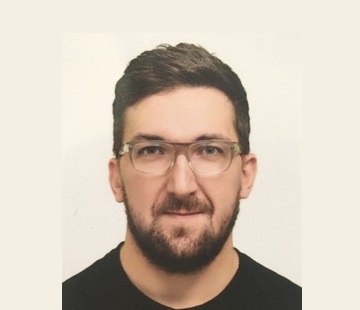
Symmetry aspects of antiferromagnets and altermagnets
Video conference: https://univ-grenoble-alpes-fr.zoom.us/j/98769867024
Meeting ID: 987 6986 7024 Passcode: 025918
Abstract: Antiferromagnets being an abundant class of magnetic systems now lie at the core of the research in spintronics, and tremendous efforts have been invested in unraveling transport properties of antiferromagnetic materials. In this regard, altermagnetism has recently appeared as a new important concept for characterising magnetic systems that feature the breaking of time-reversal symmetry and the lifting of Kramers spin degeneracy in the absence of spin-orbit coupling, while being accompanied by a compensated net magnetization: the two facets commonly and exclusively attributed to ferromagnets and conventional antiferromagnets, respectively [1].
That being said, various properties thought to be solely inherent to ferromagnets have been known to coexist with antiferromagnetism. The research on such materials and theoretical understanding of their properties have had a long history, dating back to the works of I. Dzyaloshinskii, who discussed the possibility for breaking time-reversal symmetry in antiferromagnets that lays down conditions for weak ferromagnetism and piezomagnetism [2-4]. Long before the modern era of electronic structure calculations, the classification of macroscopic properties pertaining to the antiferromagnetic order was pioneered by E. Turov, who proposed simple symmetry arguments for categorising kinetic, optical, and acoustic phenomena in antiferromagnets based on the mutual relationships between antiferromagnetically coupled sublattices [5,6]. Within this framework, one can formulate a rigorous phenomenological base for the emergence of various “unconventional” properties, including weak ferromagnetism and the anomalous Hall effect. The notion of altermagnetism itself has come up from the analysis of the anomalous Hall effect, and it has already become evident that altermagnets can feature all these phenomena in the presence of spin-orbit coupling. In this sense, altermagnetism can be considered a new turn to the problem from the microscopic point of view owing to the development of first-principles methods. However, the key aspects of the altermagnetic spin splitting in macroscopic properties of antiferromagnets remain to be fully understood.
In the first part of this seminar, I will talk about basic aspects in the description of antiferromagnetic systems from the group-theoretical perspective using the machinery of magnetic and spin groups. Among other things, I will discuss the works of E. Turov and outline his ideas in the context of altermagnetism. In the second part, taking on the example of realistic models for altermagnetic perovskites, I will discuss the relation between weak ferromagnetism, orbital magnetization, and anomalous Hall effect [7]. In particular, I will show that these phenomena, while being perceived identical from the macroscopic point of view, have different microscopic origins, and that weak ferromagnetism and the anomalous Hall effect in antiferromagnets can be related to the same-sign and sign-alternating components of Dzyaloshinskii-Moriya interactions, respectively. Importantly, based on this model example, I will argue that the altermagnetic spin splitting does not appear to be an essential ingredient for the emergence of orbital magnetization and the anomalous Hall effect.
References:
[1] L. Smejkal, J. Sinova, and T. Jungwirth, Beyond conventional ferromagnetism and antiferromagnetism: a phase with nonrelativistic spin and crystal rotation symmetry, Phys. Rev. X 12, 031042 (2022).
[2] I. Dzyaloshinskii, A thermodynamic theory of “weak” ferromagnetism of antiferromagnetics, J. Chem. Phys. Solids 4, 241 (1958).
[3] I. E. Dzyaloshinskii, The problem of piezomagnetism, Zh. Eksp. Teor. Fiz. 33, 807 (1957) [JETP (USSR) 6, 621 (1958)].
[4] I. E. Dzyaloshinskii, Space and time parity violation in anyonic and chiral systems, Phys. Lett. A 155, 62 (1991).
[5] E. A. Turov, Kinetic, optical, and acoustic properties of antiferromagnets (Ural Division of Academy of Sciences of the USSR, Sverdlovsk, 1990)
[6] E. A. Turov, Can the magnetoelectric effect coexist with weak piezomagnetism and ferromagnetism?, Uspekhi Fizicheskikh Nauk 164, 325 (1994) [Physics-Uspekhi 37, 303-310 (1994)].
[7] I. Solovyev, S. Nikolaev, A. Tanaka, Altermagnetism and weak ferromagnetism, arXiv:2503.23735
Biography: Sergey received his PhD in theoretical condensed matter physics from the Ural Federal University and worked as an assistant professor in Tokyo Institute of Technology and the University of Osaka. His research interests lie in different areas of magnetism, strongly correlated materials, and transport phenomena.
